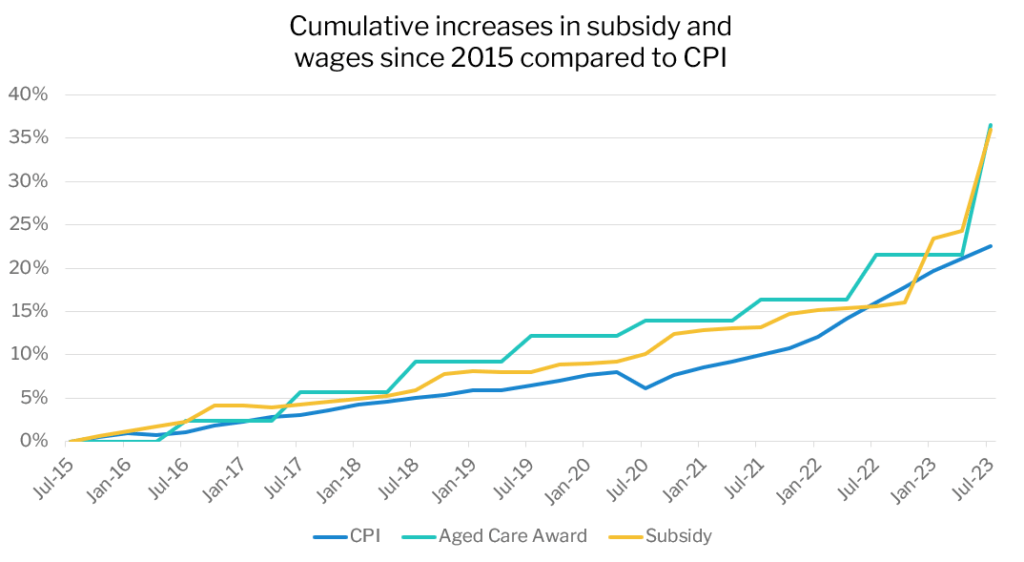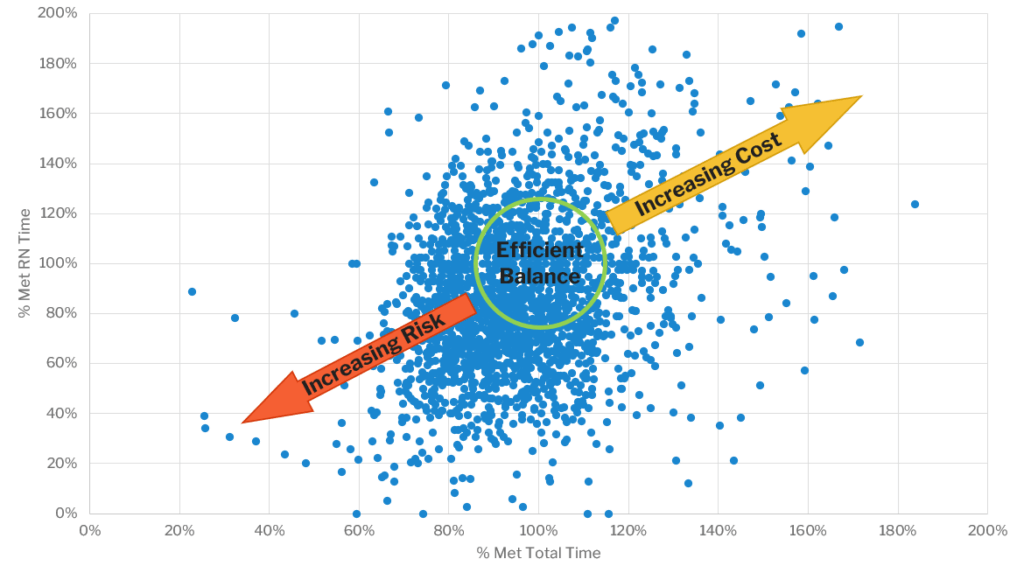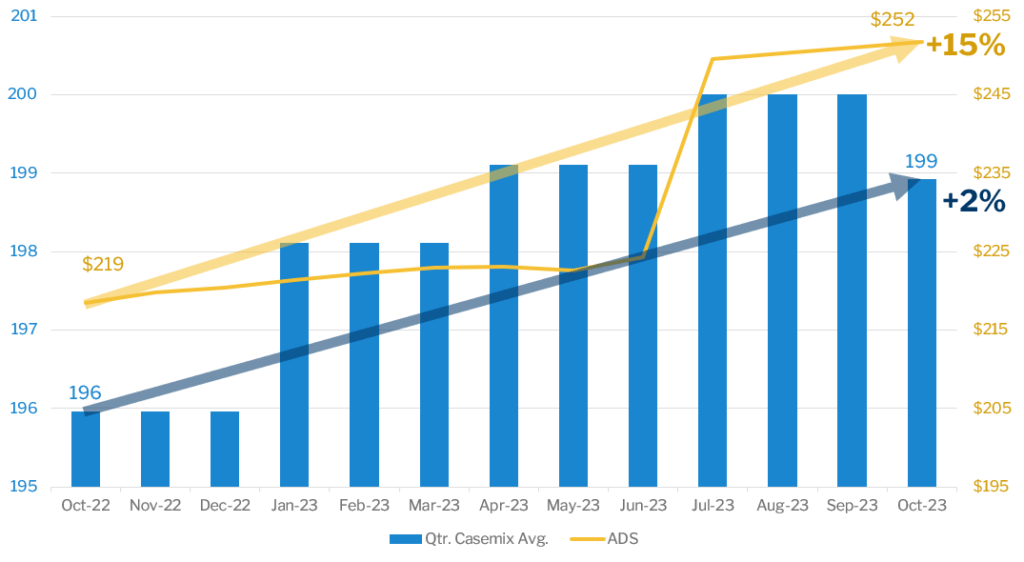Budgeting for changes to revenue and costs coming in FY24
June 5, 2023 | AN-ACC

By Tyler Fisher, Data Scientist
The introduction of AN-ACC in October 2022 produced the largest ever subsidy increase in Australian Aged Care and in July this year, both the Aged Care Award and subsidy will again realise historical increases . The largest ever pay increase for our aged care workers has been welcomed as it signifies real progress towards genuinely valuing the dedication and skill in this industry, and hopefully will help aged care providers attract and retain staff. The government will invest $36 billion in aged care workers, a new regulatory model, enhanced Star Ratings and strengthening Medicare in the form of:
- Australian National Aged Care Classification (AN-ACC) price increase
- Increase to the 24/7 registered nurse supplement
- New hotelling supplement
- New grant opportunity under the AN-ACC Transition Fund
Over the past eight years wages and subsidy have both grown by 36%, with subsidy playing significant catchup in the last year.

The challenge for AN-ACC operational efficiency
This further affirms the direct takeaway from the Royal Commission, which led to the implementation of a care minute mandate; providers must spend more on clinical care. How much more will vary site by site. What we do have however is visibility of the mandated minutes, and what subsidy revenue we’ll be entitled to. This therefore allows each facility to determine the budget for the appropriate skill mix based on a defined model of care and in turn provides a target for subsidy management and a known position in relation to compliance.

Taking control of this data and managing towards the desired outcomes requires the right tools to efficiently analyse available data and make informed decisions.
The impact of the changes on the Industry
In its first ever indexation of the Aged Care National Weighted Activity Unit (NWAU), the Independent Health and Aged Care Pricing Authority (IHACPA) has provided the largest ever increases to aged care subsidy. The industry will finish the financial year where the Department of Health and Aged Care had predicted, with an average casemix of 200 minutes and an Average Daily Subsidy (ADS) of $225. We will also see a significant recalibration of the Relative Value Units for each AN-ACC class commencing October this year. So, when we compare the relative starting points from October 2022 to one year later, we can see that subsidy will have grown by 15% and average casemix will have grown by 2%. As we can see the industry average casemix will fall as a result of the recalibration. The biggest factors contributing to the decline are Class 5 care minute requirement reducing by 7% and Class 7 care minute requirement reducing by 1.6%.

The Commission has the data and will use it
The need to balance rosters and claiming has significant implications. AN-ACC claim data will be provided to the Aged Care Quality and Safety Commission, which they will use along with other regulatory intelligence to assess the suitability of the skill mix within services. Care minutes establish a minimum quantity of care. This responsibility is in addition to maintaining an adequate number of appropriately skilled staff to ensure the care needs of care recipients are met. Residential aged care providers that do not have an appropriately skilled workforce are at risk of not meeting the Aged Care Quality Standards. How you choose to align your staff skill mix to resident casemix to remain compliant can take on many forms. Models of care across the industry vary widely and can be adapted to meet availability constraints region by region or the varying complexity of care required service by service.
To be clear, legislation requires that residents receive the care they require. There should never be any strategy to detract from that and there is more funding than ever before to contribute to that. How we disperse that funding through a model of care and roster demand templates has massive implications to compliance and sustainability. Every service should determine the appropriate balance between Medicare claiming and rostering in order to remain compliant and sustainable.
Contact us today for a free report analysing your claims and care minute data.


